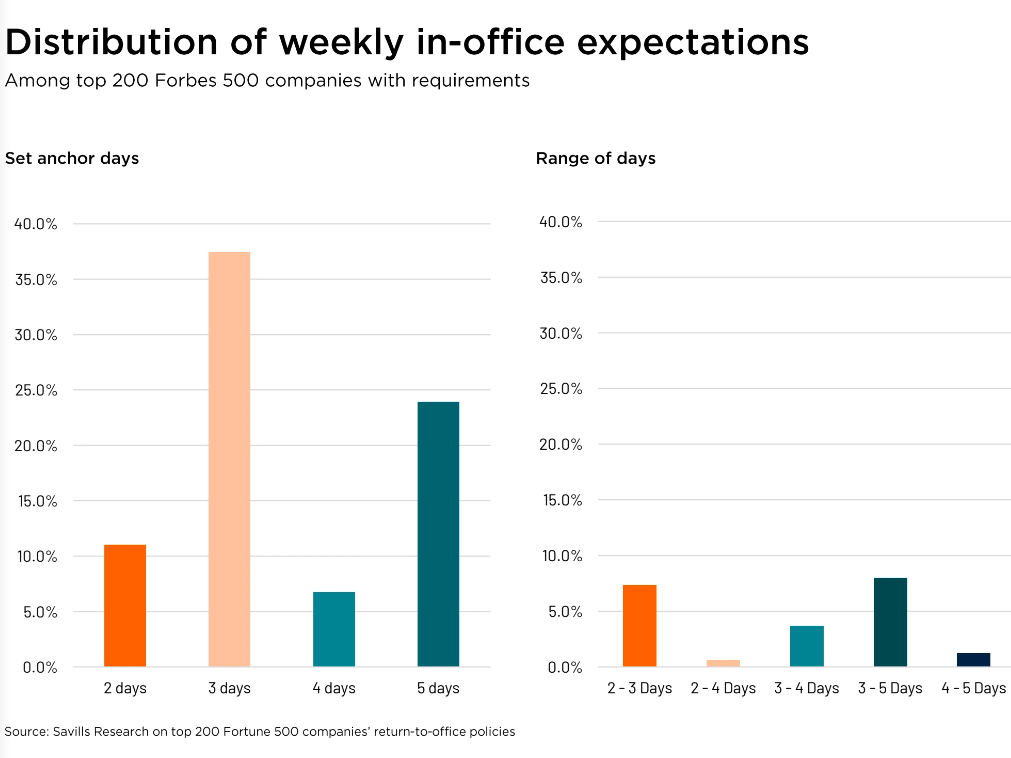Flex Office Sector Shows Signs of Bouncing Back: Q&A
Workthere’s Ted Skirbunt discusses the serviced office sector’s rebound in the wake of the pandemic.
The coronavirus-inflicted economic uncertainty has led to a dramatic drop in leasing activity and near-zero levels of flexible space occupancy. Last year, the coworking sector experienced a boom, with pre-pandemic activity reaching an all-time high, according to a Coworking Resources 2019 report. A lot has changed since then—the sector now bears little resemblance to its position at the beginning of 2020.
Workthere, a Savills-powered flexible space business, focuses on helping companies find serviced office, coworking or shared space. The company’s latest Flexible Office Provider Sentiment Survey aims to help better understand how COVID-19 is impacting flexible offices globally. According to the report, things look bright, especially in the longer term, with 74 percent of office space providers feeling optimistic about the sector over the next 12 months. Director Ted Skirbunt describes what the future looks like for the flexible space sector.
READ ALSO: Coworking Gets Creative Amid COVID-19 Crisis
How are flexible space operators adapting to the new norms in order to mitigate pandemic risks and workplace disruptions?
Skirbunt: The safety and well-being of their employees and members/tenants is paramount, including—but not limited to—enhancing their cleaning and sanitization protocols, instituting temporary occupancy restrictions, enhanced building systems monitoring, and modifications to operational protocols. Most providers have published new operating standards that are available for public consumption.
Additionally, a consortium of flexible office providers, consultants and service providers has created the Workplace Operators Readiness Council that will be sharing, coordinating and developing information and best practice advancements towards a safe and healthy office amid a dynamic and evolving situation.
Tenants were attracted to the flexible office space model even before the pandemic. What do you think will drive appetite for flexible office space going forward?
Skirbunt: Most conversations we’ve had recently with clients of all sizes indicate many of the same demand drivers are likely to remain and, in some cases, be of amplified importance particularly for self-contained flexible office suites.
These demand drivers for flexible office space include uncertain macroeconomic conditions and headcount growth forecasts resulting in a reluctance to sign long-term contractual commitments, minimal upfront out-of-pocket capital expense, as well as the ability to incorporate a distributed network or constellation of locations for employees to access on demand—either within a city, region or country or from anywhere around the globe.
Will traditional landlords start considering more flexible lease terms in the future? Why?
Skirbunt: Many landlords were already moving in that direction even before the COVID-19 pandemic, including Tishman Speyer, Hines, Durst and Thor Equities, to name a few. And yes, it certainly appears it will likely continue. Why? As a member of one institutional landlord said to me recently, “Because our largest and most valuable customers are demanding it and we want to be best positioned to maintain their business for the long term.”
How can flexible space operators and providers stay commercially viable in the short and long term?
Skirbunt: The cleanliness, health and wellness of the space, systems and operational protocols are understandably of paramount importance in the short term, and we expect they will continue to be a differentiator among operators in the long term.
 Industry professionals believe the post-coronavirus real estate environment will be a tenant-led one. What’s your stance on this?
Industry professionals believe the post-coronavirus real estate environment will be a tenant-led one. What’s your stance on this?
Skirbunt: Despite what some industry professionals may believe historically, tenants’ appetite for space and the manner in which they consume and utilize it has and will always be what drives the market. The broad acknowledgment of that fact within the industry may well indicate the acute severity of the situation at hand.
How do you see the flexible office sector now?
Skirbunt: Right now, the sector is at an inflection point. Will it look different in six, 12 or 24 months? Almost certainly. What it will look like and the modality in which flexibility is delivered to the end users of office space is yet to be determined.
How will the flexible office space model change after the pandemic?
Skirbunt: The inherent problems of lease arbitrage models (or any arbitrage model for that matter) are currently exposed to their core. So-called management agreements will be necessary. Moreover, for greater adoption of flexibility—which would likely lead to a more beneficial array of options for tenants—there may well need to be amendments to certain regulatory frameworks that govern how certain types of income are accounted for by landlords.








You must be logged in to post a comment.